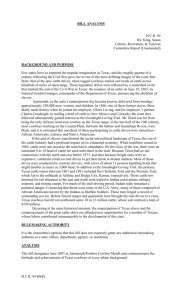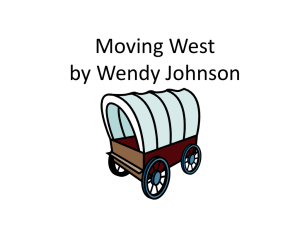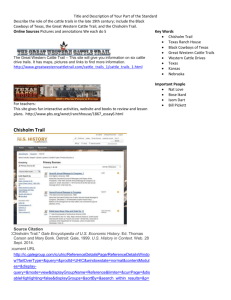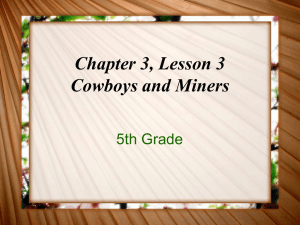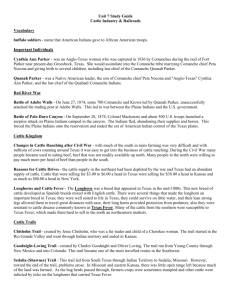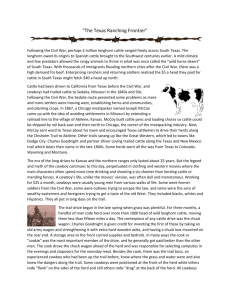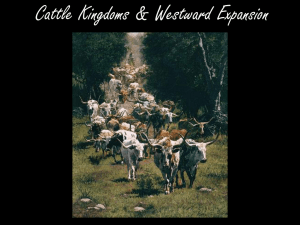cowboys review and location
advertisement
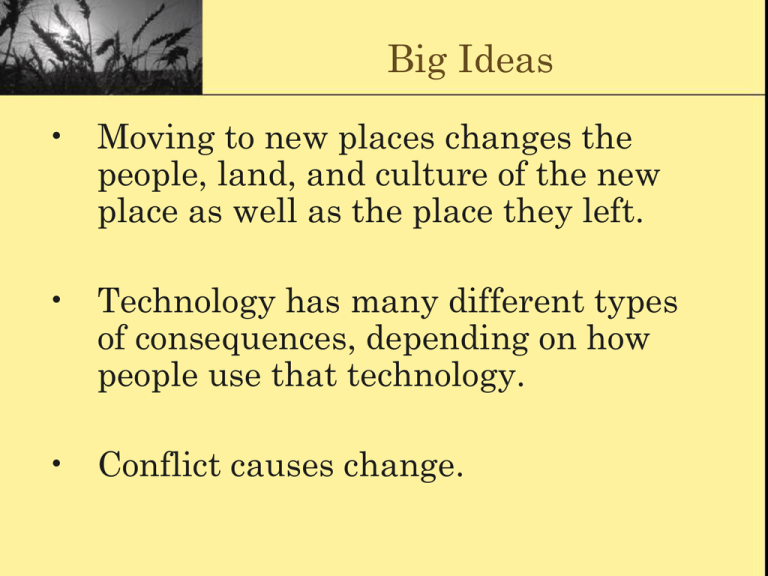
Big Ideas • Moving to new places changes the people, land, and culture of the new place as well as the place they left. • Technology has many different types of consequences, depending on how people use that technology. • Conflict causes change. Georgia Performance Standards • SS5H3: The student will describe how life changed in America at the turn of the century. • Describe the role of the cattle trails in the late 19th century; include the Black Cowboys of Texas, the Great Western Cattle Trail, and the Chisholm Trail. • Describe the impact on American life of the Wright Brothers (flight), George Washington Carver (science), Alexander Graham Bell (communication), and Thomas Edison (electricity). • Explain how William McKinley and Theodore Roosevelt expanded America’s role in the world; include the Spanish American War and the building of the Panama Canal. • Describe the reason people emigrated to the United States, from where they emigrated, and where they settled. Physical Features of the West • As the country became “smaller”, people traveled west and came upon numerous physical features of the United States which were new and exciting. Let’s embark on a scavenger hunt to try and locate some of these physical features.! 1. The Grand Canyon 2. The Salton Sea 3. The Great Salt Lake 4. The Mojave Desert The Cattle Drives • In the 1860’s cattle was so abundant in Texas that one cow would sell for only $4.00. • This same cattle could be sold in the Northern and Eastern United States for about $40.00 a piece. This is called: Supply and Demand So what would you have done if you were a Texas cattle rancher? The only problem was… …the railroads did not cross into Texas. The closest railheads (a town where railroad tracks begin or end) were hundreds of miles away. The Cattle Drives • The solution was… …to “drive” the cattle to places like Abilene, Kansas so they could be put on trains and shipped to stockyards in the northern and eastern part of the United States. The most popular trail was the Chisholm Trail, which started in San Antonio, Texas and ended in Kansas. Another popular trail was the Great Western Trail, which start in Bandera, Texas and ended in Ogallala, Nebraska. http://www.bcr.org/cdp/exhibits/westerntrails/cattle/index.html http://www.nebraskastudies.org/0500/frameset_reset.html?http://www.nebraskastudies.org/0500/stories/0502_0100.htm l http://www.pbs.org/weta/thewest/program/episodes/five/cowboys.htm Life on the Drives • What was life like for the cowhands who worked on these cattle drives? http://www.cartermuseum.org/collections/smith/ The End of The Cattle Drives • The cattle drives only lasted for about 20 years. 1. What do you think were some causes for the end of this important era for the West? The Homesteaders of the Great Plains region were getting upset that the cattle were trampling their new land and their crops. a) to keep the cattle drives off of their land they put up fences with barbed wire 2. The railroads began to grow. Railroads were built in Texas in the 1870’s, ending the need for cattle drives to northern railheads. 3. Many cattle died during the abnormally cold winter of 1886-1887. Black Cowboys • Many African –Americans had just found freedom from slavery due to the 13th Amendment. For African Americans, the Old West represented a new home, a new beginning, and a new opportunity to enjoy freedom, which they so desperately wanted. Nat Love Bill Picket http://www.blackcowboys.com/blackcowboys.htm Websites • http://www.pbs.org/weta/thewest/resources/archives/ Resources • http://www.sonofthesouth.net/texas/westward-expansion-map.htm • http://www.ncgold.com/goldrushtown/photoalbum/early_photography_people/01people.jpg • http://images.google.com
